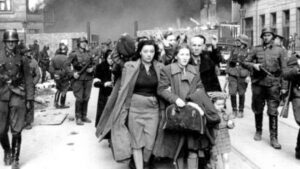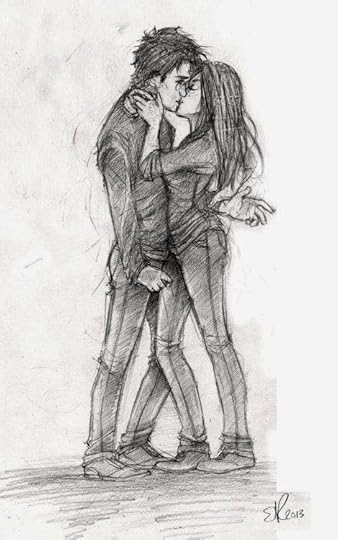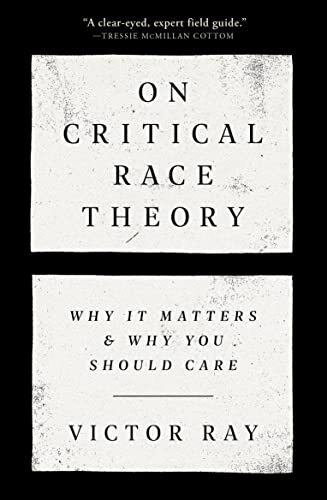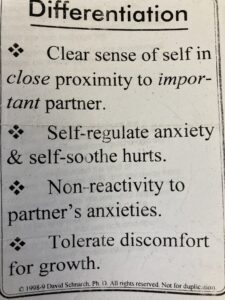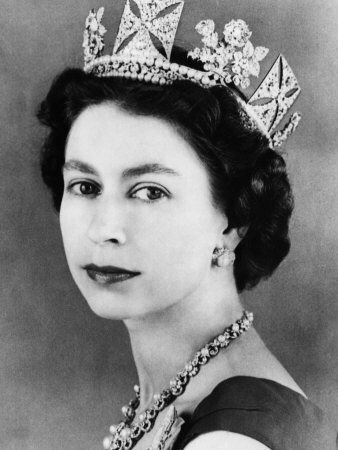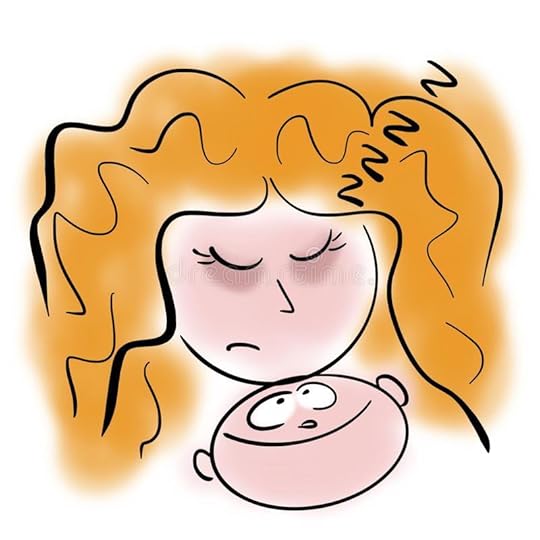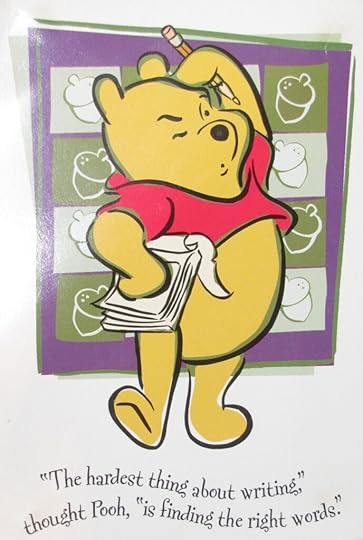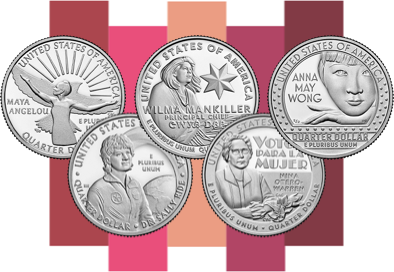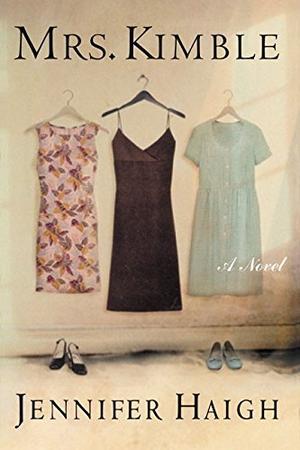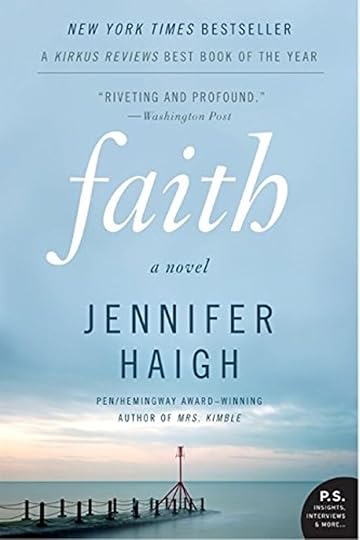Elizabeth A. Havey's Blog, page 2
October 9, 2022
LILAC GIRLS
Lilac Girls was published in 2016 by Martha Hall Kelly, but it is such an amazing book, you should read it now, even though it’s been out for six years. I did.
Yes, it’s a Holocaust story, and has been compared to Kristin Hannah’s The Nightengale and Anthony Doerr’s All the Light We Cannot See. They are all VERY different novels. But they all remind us of a time period in history that many sat back and witnessed, with not a tear shed or a heart rate raised. I can write that line with confidence, because my husband and I just finished watching Ken Burns, THE HOLOCAUST on PBS. And yes, it was the greatest humanitarian crisis of the 20th Century. And yes, though Americans have always considered themselves a nation of immigrants, too much time had passed for most to even consider allowing thousands of Jewish refugees to enter the United States. Or was it just because they were Jewish.
Burns has film, actual film MADE BY THE NAZIS, who must have thought what they were doing was heroic, needed, and in many ways incredible—or they would not have been so proud of their decisions and actions.
Burns’ THE HOLOCAUST is in three Episodes: THE GOLDEN DOOR, 1938; YEARNING TO BREATHE FREE, 1938-1942; and THE HOMELESS, TEMPEST TOSSED, 1942;
HISTORY
But what happened in Nazi Germany must never happen again, though aspects of it continue to rise in countries where groups of people, because of race, sex or religion, are ignored, persecuted and often tortured and killed. The Nazis don’t have a hold on all ways to become inhuman, but their heinous acts for the time period, their mass killings by trickery and lies, their plundering of possessions that belonged to millions of Jews before they gassed them and burned their bodies, their medical experiments which amounted to human torture, all of this will never be forgiven or forgotten.
The latter, the medical experiments, is the core of LILAC GIRLS.
There is Kasia, who from the very beginning finds it difficult to understand and accept the rapid changes going on in Germany, changes that are bleeding into her quiet town in Poland, creating instant death in her village, horrors right in front of her eyes–a doctor, a neighbor, someone she has known for years now hauled away; others shot because she’s a Jew or because she is fighting against these horrific changes. The life of a human being has come to mean nothing.
There is Herta, who lives in Germany, has studied to become a doctor, and when witnessing the rape of a you girl in a campgrounds, shoos the boy away but does nothing to help the victim. Right then the reader sees the stone heart that could agree to physical experiments being perpetrated on Jewish female victims.
And there is Caroline, who in 1939 is living in New York City, the daughter of a wealthy family, who over time learns of the horrors of World War Two and will then do whatever she can, even if that means cheating on the rich, to help those suffering in Germany.
AND WHY THE TITLE?
Scent is an extremely strong trigger for memory. Toward the end of the novel, we read about Caroline and her father:
“I thought I might die when my father passed away. It was so long ago, but there isn’t a single day that goes by that I don’t wish he were here.” Caroline waved toward the lilac bushes that swayed above us. “He loved these. It’s a love reminder of him, but terribly sad too, to see his favorite Abraham Lincoln lilacs blossom without him.” …”But it’s fitting in a way, Father loved the fact that a lilac only blossoms after a harsh winter.”
And they do, those LILAC GIRLS, they blossom, all three of them, in their own way…but you must read to see how that all comes to be.
Facebook Twitter LinkedInPinterest
October 2, 2022
What Are Your Teens Thinking about Sex, Abortion
As parents, grandparents, friends and relatives–maybe it is time we were all more open about abortion, more able to talk about it, especially to the male members of our families, explaining why it often happens, either spontaneously (miscarriage) or through medical intervention. Of course the first thing to discuss is sex, and the possibility of resultant pregnancy.
The LA TIMES recently published the following to begin the conversation:
Communicate female humanity: From the beginning parents should communicate the humanity of women and girls and not fall into the trap of referring to them as sexual objects. Our culture is saturated with images of women as sex objects, so the challenge to parents is weighty and should always be in the forefront of parenting judgments. “Wow son, now that you’re doing so well in baseball, you need a beautiful girlfriend.” SO WRONG! “I enjoyed meeting your friends yesterday, the shared laughter and shared respect, just wonderful.” RIGHT.Provide legal knowledge: A young man should know that sex with a woman requires legal consent or he could be slapped with a criminal offense. A woman unconscious or drunk cannot give legal consent. Alcohol and drugs combine to create a situation that can get out of control–then a crime could occur, not to mention the physical and mental pain he is causing the woman. Identify healthy masculine behavior: Help young men express their masculinity in a healthy way. Being masculine does not mean exerting violence, power and control: ie rape is a crime involving all of those behaviors. Teach bystander intervention: Parents can help guide young men to be respectful of women and girls. This includes pointing out the negatives of sexist jokes and vocabulary, video games and films, reading materials and music etc, because over time these can destroy sensitivity to women and contribute to sexual violence. Young men can voluntarily avoid these traps, always being respectful of women.AND PLEASE NOTE THE FOLLOWING:
A statistic: a 2009 study from Harvard found that more than 40 percent of parents don’t get around to talking to their kids about safe sex practices until after their kids are sexually active. Two thirds of sons in the study said they had not talked with a parent about how to use a condom before they started having sex. One parent of a teenage son commented: “It’s sad to hear that so many parents [are] so far behind the curve. Sex education is a lifelong thing [and parents] need to be able to pass on good information,” even if they can’t always be the messengers themselves.
Yes, it can be hard for parents to discuss these important issues, but that’s just an excuse. There are materials and classes and videos that they could use to jump-start a conversation with their young adult child. THEY NEED TO DO THIS. They need to be aware of what he or she is thinking is okay–because maybe it’s not. They need to guide their daughters in understanding how to show affection while still remaining in control, or using birth control to prevent pregnancy and sexually transmitted diseases. With sons, it might be harder to start the conversation, but it is necessary. Purchasing condoms might be a good start. Bottom line: these are your children growing into being adults. You need to talk to them about sex; you need to be examples of approaching a topic honestly and openly.
The LA TIMES editorial concludes: Male and female students alike need to realize that sexual assault is not a drunken miscommunication but a violent act that must not be tolerated.
SO THANKS for READING….I have maintained for years, that high schools should require courses about human sexuality, the possibility of pregnancy after intercourse, and the responsibility all humans should consider when having unprotected sex or even protected sex.
Thanks to ER 2013 artwork.
Facebook Twitter LinkedInPinterestSeptember 25, 2022
Autumn: Always A Beginning
 Autumn is coming on fast. In some parts of the country and in the world, summer’s end was wet, incessant rains and hurricanes that early on felled trees and leaves, smashing grass and crops with a blanket of soggy vegetation and shorn tree limbs. Such weather patterns contrast with drought and dryness in other parts of America and the world. What does nature know that we do not about the length of our days? Why do some regions have bounty and others experience loss? Is there something we need to atone for?
Autumn is coming on fast. In some parts of the country and in the world, summer’s end was wet, incessant rains and hurricanes that early on felled trees and leaves, smashing grass and crops with a blanket of soggy vegetation and shorn tree limbs. Such weather patterns contrast with drought and dryness in other parts of America and the world. What does nature know that we do not about the length of our days? Why do some regions have bounty and others experience loss? Is there something we need to atone for?I’m sure there is. If I were still living in California, I would be yearning for rain. But back in the Midwest, I can enjoy the grass shortening its growth, the leaves on trees beginning to turn, and yes, all the crab apples on my tree have fallen. My chore of raking them up is over!
Though still enjoying pots of pink impatience, very soon cooler weather will call attention to my gold, burnt ocher mums, my grouping of pumpkins on the front porch. Already my autumn welcome sign is hung and a wreath of yellow leaves will soon blaze on my front door. This is my time, autumn always a beginning.
A CLEARER PICTURE
When things fall back toward earth, the outlines of garden and lawn, of walkway and road become more apparent. Such a precise definition creates a sense of order, organization. In fall there are memories of wild vines and riotous summer flower color. But now it’s best to be satisfied with quieter denser things like clipped boxwood and evergreens, bare tree trunks of grey, soft brown. The air is cool. The skies seem swept up too, presenting swathes of crystal color. Cold air outlines things so definitively, you can almost see each leaf and branch.
A TIME FOR CONTEMPLATION
Definition and order soothes the soul, autumn being a time to put things away in their place, remember that most things in the outer world will quietly sleep, waiting for reawakening. In autumn we put the garden to bed, energy now honored and stored. Autumn becomes a time to read, contemplate, make decisions, draw those we love even closer.
And if you seek solace and quiet, this is your time. For as we move inside to live, as we place bright things around us, those reminders of sunshine–a pumpkin, a sheaf of leaves, flowered pillows, candlelight–it can become a time to move inward in our thinking–to meditate, determine more and more exactly who we are, and where we are going.
Autumn decorations remind us of endings that are resolute, that leave us feeling blessed, not sorrowful. Autumn is atonement for Jewish people, but so appropriate for all of us to tidy up our souls as the earth is preparing for sleep, hibernation. Now more than ever, we should atone for the problems we’ve caused, try to mediate our expressions of anger. And certainly, if we’ve hurt someone, time to ask forgiveness; and if someone has hurt us, find a way to forgive that person, to lighten the loads we often carry.
SETTLING IN
In autumn we pick fruits and veggies for canning. We stock up on walks, hikes, bike rides before winter winds change the atmosphere. For despite our modern world, we still need to engage our ability to survive. And though it might be early, there will come a time as the days get shorter when we will settle back into our brains, examine who we are, where we are going, how we might improve. Life cannot be lived like the riot of spring where nature blows her wad, lets everything grow, rush about. We enjoyed fertility. Now it’s time to be more judicious in our use of harvest fruits; we need to carefully use and share our bounty.
Then in the spring, when life comes back, we have no fears for the future. But in autumn, we need to count jars in the cellar, apples in the basket, sins on the soul. We need to tidy our lives, draw within to discover how we will survive, how we will make it through the darker times of life. How we will help others through their darker times.
FINAL THOUGHT
In each of us is a light within. Sharing that light draws bounty, brings good things to us whether the world is hard-packed snow or dry desert. Autumn can provide a time for atonement. Winter and beyond can be full of the light of love as the grace of forgiving brings warmth, reclaims love. If you are feeling like all the days of your life are hard, cold winter, then it’s time to open up to those around you, share the light within you. IT WILL BRING YOU HAPPINESS. As a wise woman once said to me: “Feeling sad today? Then go out and help someone else.” She was right.(Credit: picture above, the art of a lovely person on Face Book.)
Facebook Twitter LinkedInPinterest
September 18, 2022
WHEN YOU CONDEMN SOMETHING, DO YOU FULLY UNDERSTAND IT?
Like the precepts of certain religions: Honor Your Father, we often encounter statements that have been verified by others to be absolute truth. But are they? How do we evaluate or decide if a statement is always true? What process do we use to evaluate information? I think we could agree, that it is best to understand something before we condemn it. But that process can require our willingness to research, to think and to understand.
HOW WE LIVE WITH ONE ANOTHER
In a recent article in the Chicago Tribune, John Warner explores this problem regarding Critical Race Theory. When Warner approaches a particular point of view that is dealing with a problem, an argument–he “envisions it by literally putting on a different set of glasses. If I examine a set of events through a lens of this other idea, what do those things look like?”
He then refers to a profound early experience when reading Howard Zinn’s “A People’s History of the United States”. In that book, Zinn quotes Winston Churchill saying something that he doubts Churchill said…”History is written by the victors” and then turns that statement upside down. The example Warner uses is one that refers to the Industrial Revolution in America, where the rich became richer and the poor or struggling were “literally killed in the process as the robber barons amassed … inconceivable wealth.”
Focussing on this example helped Warner realize that different questions require different lenses to see an answer clearly. Thus another question…
“Given that the 13th Amendment and later initiatives like the Civil Rights Act provided equality under the law to Black People in the United States, why do they, on average, still lag behind in terms of ….educational outcomes and building wealth?”
A NEW TERM TO UNDERSTAND AND TO ACCEPT…
One of the lenses to look through to try to answer that question is critical race theory, which focuses on the idea that racism is systemic in the country’s institutions and that those institutions maintain the dominance of white people. Critical race theory has been positioned as some kind of boogeyman coming for white children, but the truth is:
It is a set of ideas that can be understood, discussed and applied, (being) nothing for any thinking person to be afraid of.
John Warner then mentions the publication of a new book that helps advance this discussion: ON CRITICAL RACE THEORY: WHY IT MATTERS & WHY YOU SHOULD CARE, by Victor Ray, sociologist and senior fellow at the Brookings Institute.
Warner writes that reading this book “is like having a conversation with a wise and perceptive professor who both understands his subject and anticipates the questions his audience might have.”
Warner also wanted to make sure that the book addressed the progress the United Sates had made. He found some answers in Chapter Four, Racial Progress. Malcolm X starts with this: “If you stick a knife in my back nine inches, and pull it out six, there’s no progress. If you pull it all the way out, there’s not progress. The progress is healing the wound the knife made.”
Victor Ray then states the true and disturbing ways progress for African Americans had been reversed, including schools that have gradually been re-segregating in the 1980s and an expanding wealth gap between white and Black Americans.
When governors of certain states are insisting that critical race theory not be taught in any shape or form in their state’s public schools, they first–are trying to make the term something evil that will hurt white children (it’s just history folks) and they are also attempting to once again ignore the constitution of the United States, that ALL MEN and WOMEN ARE CREATED EQUAL.
FINAL THOUGHTS
In his book, Ray makes his case. But I will put it into a question…Why can’t history classes read a book as a learning tool to better understand racial inequalities in our society and thus in our country? His book is offering one lens that may help some see more clearly how race and division developed in this country and thus come to some well-educated conclusions.
People, senators, governors, teachers who attack critical race theory without taking a hour or more to read this book and thus understand what the theory describes and asks–are choosing what Warner calls, willful blindness.
The author, Victor Ray, and reviewer, John Warner, are both right. The future of our country depends on our being UNITED. We will not achieve that unless we are able to use our brains and our hearts to understand what is lacking in society, and to make it clear that freedom, equality belong to every American. It is part of our Constitution, and if any of us have doubts, we must educate ourselves to fully understand.
Below is a rubric that helps you argue while still maintaining self-worth. In other words, when defending equality for all, you will encounter hate and anger. Try to hang in there. Believe in yourself and your truth.
Facebook Twitter LinkedInPinterestSeptember 11, 2022
Farewell to Queen Elizabeth, Blessings and Thanks
It was a very different path for a young girl to take, writing letters to the Queen of England, cutting out photos and news clips of the opening of the British Parliament, this instead of the current singer, actor or actress. My best friends understood, and even this week were sending me photos and putting “hearts” on my Facebook postings.
Elizabeth II was in many ways always a role model for me, sparking my interest in British history and eventually many literary works of British authors. Assigned to read Jane Eyre in high school? That’s fine, I’ve a page-worn copy, have read it a couple of times. Want to discuss the history of World War II– yes, and I can relate much of England’s involvement from the point of view of the King George VI and his family. I have books, photos. What do you want to know?
NINTY-SIX YEARS!
Elizabeth Alexandra Mary. What a woman, still meeting with her Prime Minister just hours before she died. So yes, this is my farewell post to my Queen Elizabeth. I have watched news clips for the last few days, reviews of the life of Elizabeth II, one of devotion to her duty. And yes, I’ve cried. She lived a long, amazing, dedicated life–so in some ways, it is like losing a far-away-friend–or at least a mentor.
I never met the queen in person…many have been at least in waving distance. In 2012, on a bus from our hotel near the Thames and the London Eye, a woman spoke of seeing the Queen just days before as Elizabeth rode to open Parliament. Jealous, yes.
BUT I CAN LOOK BACK…
For have you ever obsessed about a prominent figure, someone that you followed before the internet, someone whose life truly interested you so that you saved newspaper stories or color photos from magazines. Names that immediately come to mind: the Beatles, Audrey Hepburn, Van Morrison, Barbra Streisand, James Taylor, Diana Ross, Jackie Kennedy, Aretha Franklin. Or it could have been a sports personality–someone in tennis, baseball, football–the list would be endless.
BEGINNINGS
My obsession started with a photograph and it led me in directions that fed my love of history, my desire to read, write and ultimately travel. What? Not possible. No childhood obsession could do all of that. Oh, yes it could.
In my family, you could say we are “anglophiles”, people who love English literature, music, art and culture. When an issue of LIFE magazine appeared on the coffee table in my home, I asked my mother about the queen on the cover. All young girls at some time read about princesses, queens. There are fairy tales–and there is Disney who brought so many of those stories to the public through animation and music: Cinderella, Snow White…But then there was this woman wearing a crown and bearing my name, Elizabeth–that sealed the deal, sending me on a long and fulfilling journey that truly will never end.
NOW I KNOW HISTORY
Searching the library for books on QEII led me to books on Elizabeth the First who ruled England from 1558 to her death in 1603. The flood gates opened, and I read about Henry VIII and the Tudors, Spanish and French royalty and the wars fought, won and lost. Of course the role of our independence from England, the settling of this new nation also figured in my reading. And when traveling anywhere or looking at a map of the U.S. I could easily find the names of English people and places: Jamestown, New England, New York, Maryland, Elizabeth City, Virginia.
An amusing story accompanies this last. We were reading about the colonies in American history and I remarked to my mother that Virginia was named after Elizabeth the First, the Virgin queen. “But she was no virgin,” I told my mother who stared at what she thought was her innocent daughter. And yes, I was, truly innocent of sex and all its ramifications. What I meant was my meaning of “virgin” garnered from my Catholic upbringing and the Virgin Mary. To me the word meant good and I knew QEI had waged wars, though she also hung folks. But the comment almost immediately led to “the sex talk.” Ah, more flood gates opening.
And what did I want for Christmas one year more than anything? This book, a 250 page work of black and white and some color plates of QEII and her family. This is one precious possession that my mother found in the Marshall Field book department. I was one joyful kid.
Of course the next step after reading and researching was writing. So in middle school I wrote to the queen. I addressed the letter to Queen Elizabeth II, Buckingham Palace, London, England. The letter actually got there. Then a long waiting period–and what had I written about? I was not alone in my request–I wanted to be a pen pal to one of her children. I got a lovely reply on beautiful Buckingham Palace stationery which later was ruined in a flood in our basement. But I remember who wrote that reply: Lady Rose Baring. Of course, it was a form letter saying no, but she signed the note. I found this on the internet years later: Rose Gwendolen Louisa McDonnell, courtier: born London 23 May 1909; Woman of the Bedchamber to the Queen 1953-73;… married 1933 Francis Baring ( two sons, one daughter); died Swindon 2 November 1993.
It is also quite possible that my QEII obsession led me to major in English in college and to become a secondary level teacher of English. There isn’t much distance between British history and English writers who have influenced American literature–we speak the same tongue, though it’s always amusing to draw comparisons between what the Brits and we call things, like boot for trunk and lift for elevator to name two common ones.
Through me, my husband also became a lover of London and the English countryside despite his Irish heritage. He recently found ancestors that were born in England, so now he truly has some claim to the “green and pleasant land.”
In the end I’m glad that I’m me and not some princess trying to live my life in the glare of publicity. I did meet a woman online who actually had a worse obsession. She wrote a book about her journey from the US to England in the hopes of marrying a prince. Her plot failed. But I am guessing that I am not alone–that there are others like me who got on the QEII journey because of curiosity and interest and stayed there. If you are one of those people, I would love to hear from you. I’ve met you in English gift shops as we purchase a memento of the royal family–or now something that honors the death of Elizabeth II. I know I will never forget her, and her countrymen and women will not either.
Facebook Twitter LinkedInPinterest
September 4, 2022
MOTHERHOOD…MYTHS and TRUTHS
(with thanks to writer, Chelsea Conaboy)
When you wanted to have a child, and when you were first pregnant with that wanted child, you were most probably joyful. But maybe not.
There are other scenarios we must immediately consider—the birth control failed; or even if you were trying, maybe the timing wasn’t right. But that’s life and mother nature. Nothing is perfect. Or is it.
Chelsea Conaboy in a recent piece in The New York Times asks many questions about society and how it presents the idea of pregnancy to we women.
The notion that the selflessness and tenderness babies require is uniquely ingrained in the biology of women, ready to go at the flip of a switch, is a relatively modern—and pernicious one.
It was constructed over decades by men selling an image of what a mother should be, diverting our attention from what she actually is, and calling it science. In other words, convincing us that this is human nature and we must not question it.
Thus, this keeps us from talking about what it really means to become a parent, and it has emboldened policy makers in the United States, generation after generation, to refuse new parents, and especially mothers, the support they need.
Or to say it another way, and yet not blame anyone’s grandmother or mother, many of us females are told from the very beginning that being a “mother” is or will be the greatest goal, the most wonderful experience of our lives. And for many, that might be true, though in my life I have appreciated the shift toward other choices, the steady explanations that NOT EVERYONE feels that way. Because often, the raising of our particular gender is so subtle, we really don’t realize that grandparents, parents are in many ways controlling our choices. And that later, we might be affecting our own children and grandchildren’s choices, though I firmly believe it is much more open and fluid now.
But back to this article…New research states that the idea of maternal instinct being innate is a myth, one that dates back to Christian archetypes: the Virgin Mary, whose story and identity is eclipsed by the glory of maternal love. (Conaboy’s words.) And then consider that Eve, who is part of a man, and who becomes a model for all women, is the one condemned to perpetual servitude and goodness, stifling as it is.
SOME HISTORY
In the early centuries, the home was all about rearing children, as well as being the place for economic production, education, politics and religious experience. And to add to this description, we mostly find the woman in the background. She might be tenderly referred to as the “heart of the home” but she was also encouraged to cook, clean and keep her mouth shut.
Even when growing up, I confess that hearing the Mary and Martha story, in some ways I FELT SORRY FOR MARTHA. Certainly, Mary had chosen the better part, as the Bible tells us. But couldn’t Mary have left Jesus for a little while just to help Martha with the dishes? My reaction is an example of how rubric, rules and what surrounds us definitely had an effect on our thinking. But maybe that is just me.
And in a convoluted way, the trajectory of my life was different. In my family those basic rules as what should be a “woman’s place” were broken by death. My father died early on. Devastating for our family, but also ironic, as it profoundly changed the rest of my mother’s life and subsequently mine. (My mother once dreamed of having six children. With my father’s death, she was blessed with only three.)
But now my mother had to support us, first working at home for an insurance agency and eventually rewarded with a major position she truly loved, working in that agency’s office in the city. Her two sisters, my aunts, never married, acquired Masters degrees, and worked at a major publishing company. Why do I bring any of this up? Because these women were my role models. I could toss that baby doll into a cover and strike out for a career. Which after my college education to become a secondary teacher, I did, and then later, after having three children, continued to do, getting my degree in Nursing.
A SEGWAY
Over time, I have pondered the history of women, the trajectory of their lives. Some of my conclusions were triggered in the churchyard in the Boston Common. Have you ever been there? I’ve been there four times—this always being my take-away.
As you walk among these very old graves, you will find a man buried to the far left, his grave marked with a major headstone. But to the right of his grave there will always be two or three more flat markers, maybe even four. These are his wives. Because this was a mostly agrarian culture, he farmed and she had babies, kept a garden, cooked, swept out their humble house, washed and raised as many children as possible—so they could work the farm, help the farmer. THIS WAS SOCIETY. Besides sex, THIS WAS WHY MEN MARRIED. Truly, very little love, admiration or personal development found its way into the marriages of these women. Dedication, for sure. But did these women have a choice?
But to go back to the article…Conaboy writes: In the 1800’s Charles Darwin…codified biblical notions of the inferiority of women and reaffirmed the idea that their primary function is to bear and care for children.
“What a strong feeling of inward satisfaction must impel a bird, so full of activity, to brood day after day over her eggs,” Darwin wrote in The Descent of Man. Conaboy comments on Darwin’s inability to see the needs and desires of women.
She also mentions psychologist William McDougall who in 1908 wrote: that a mother’s instinct to protect and cherish her children was a constant and all absorbing occupation, but that particular strength did not extend to her ability to be educated.
He felt that as a woman’s intelligence expands, parental instinct declines—and wait for it: unless countered by social sanctions that discourage birth control, divorce or the erosion of gender roles. McDougal, an eugenicist, was also a profound bigot. Figures. He certainly had a narrow and bigoted attitude toward women.
REALISTIC CONCLUSIONS
Though Conaboy’s article is lengthily, she does come to some conclusions: …the myth is not as strong as it once was. More and more, those narratives of perfect pregnancies and mothers are being challenged as more people share their less-than glorious experience of parenthood and just how completely blindsided they were by it.
To conclude, comedian Ali Wong’s narrative “Hard Knock Wife”, which she created after her first child was born, is fueled by hilarity and outrage at how unprepared she was for the trauma of birth and the stupid things people say to new mothers. She lets us know that postpartum is not some version of OVER THE RAINBOW, “No, it’s not like that at all, Breastfeeding is this savage ritual that just reminds you that your body is now a cafeteria.”
Thanks for reading. We all have our myths and truths. Anyone willing to share?
Drawing Dreamstock. com
Facebook Twitter LinkedInPinterestAugust 28, 2022
In Writing and In Life, Editing Can Be a Good Thing
There was a time when I was just beginning to be a writer, that the importance of my life and how I was living it, propelled me. Why? I was young. I saw that my experience though somewhat limited, was of great importance, at least to me. Major changes in my life had already happened (the loss of a parent; early responsibilities as a result). And I realized that though I didn’t want to relive my childhood, I didn’t want to forget it. So much of that time dwelled in me, making my losses and gains part of me, the engine of creativity.
Because when you write, you are either pulling things out of your own experience or making shit up. Both land on the page, and wow, you’re a writer. (Though not necessarily a good one. It takes time, lots of time. Maybe forever.)
WRITE IT DOWN
Many of us kept or still keep a diary. It’s our lives on paper, our deepest thoughts and even our angers, our hurts. It’s not fiction, but it can fuel fiction—and it always comes from the power of memory.
But when moving from Chicago to Des Moines, then to California and now back to Chicago—I gradually had to force myself to GET RID OF STUFF: the diaries I wrote in high school; the dance favors that contained poems I had written for the event; photographs, papers I wrote in college—because Beth, YOU CAN’T TAKE IT WITH YOU.
THE EDITING FACTOR
But it’s not just the editing of possessions that we are faced with. Sometimes it is people, it is acquaintances, and even friends. Because in life, we gain and we lose. The hurts experienced in our teens prepare us for the bigger ones that are sure to come, every person’s life being a mixture of joy and sorrow. Even in adulthood, we might struggle with revealing to a friend something that we know, something that might deeply hurt that person. It’s a burden now falling on us…do we provide the information before the hurt gets deeper, or do we stay silent. Editing helps. Providing a clue, an opening might ease the conversation. Do we call this tough love? For sure we can call it love.
A VERY PRACTICAL EXAMPLE
My family is wonderful, supporting and loving me with all my ups and downs. I see more and more that being a writer has helped prepare me for being a good parent, a listening and loving family member. When I share a post each week, my readers respond. They are open about my opinions, they share how they feel. They sometime argue. That’s great! That is also part of life and editing. None of us has all the answers. None of us writes a perfect sentence every time. Well—maybe now and again.
So to end this shorter post today, I’ve provided the quiz below. I am also wishing you a peaceful and productive week ahead. Maybe you will be doing some editing as you prepare to finish a discussion with a friend; or let your neighbor know you are not enjoying her son’s loud music, or would love it if the family flew to you this Thanksgiving. Whatever it is, I’m wishing you a golden tongue. I’m working on mine.
CAN YOU IDENTIFY THE FOLLOWING AUTHORS, who have editing chops?
Monsters are real, ghosts are real too. They live inside us & sometimes they win.
There are years that ask questions and years that answer.
I hope she’ll be a fool — that’s the best thing a girl can be in this world, a beautiful little fool.
Real courage is when you know you’re licked before you begin, but you begin anyway and see it through no matter what.
A bear, however hard he tries, grows tubby without exercise.
(Answers: Stephen King, Zora Neal Hurston, F. Scott Fitzgerald, Harper Lee, AA Milne)
Facebook Twitter LinkedInPinterestAugust 21, 2022
History of American Women Quarters
Let’s start with a quiz: what is the content of the 19th Amendment to the American Constitution? Answer: The 19th amendment legally guarantees American women the right to vote. Achieving this milestone required a lengthy, difficult struggle—victory took decades of agitation and protest. Beginning in the mid-19th century, several generations of woman suffrage supporters lectured, wrote, marched, lobbied, and practiced civil disobedience to achieve what many Americans considered a radical change to the Constitution. Few early supporters lived to see final victory in 1920. (Note: African American men were not allowed to vote until February 3, 1870, though they continued to meet with opposition and prejudice regardless of the law.)
THE ROAD TO VICTORY
Beginning in the 1800s, women organized, petitioned, and picketed to win the right to vote. It took them decades to accomplish their purpose. Between 1878, when the amendment was first introduced in Congress, and August 18, 1920, when it was ratified, champions of voting rights for women worked tirelessly, using various strategies to achieve their goal. Some worked to achieve suffrage acts in each state—nine western states adopted woman suffrage legislation by 1912. Others challenged male-only voting laws in the courts. Some suffragists used more confrontational tactics, such as picketing and hunger strikes. Supporters met fierce resistance–they were heckled, jailed, and sometimes physically abused.
When New York adopted woman suffrage in 1917, the political balance shifted. On May 21, 1919, the House of Representatives passed the amendment. Two weeks later, the Senate followed. When in 1920, Tennessee became the 36th state to ratify the amendment, it passed its final hurdle of obtaining the agreement of three-fourths of the states.
To achieve voting rights for women required a long, difficult struggle–and ratification did not ensure full enfranchisement. It took decades to include African Americans and other minority women. Also consider, many women were still unable to vote long into the 20th century because of discriminatory state voting laws.
AMERICAN WOMEN QUARTERS This program is a series of quarters featuring notable women in U.S. history and commemorating the centennial of the Nineteenth Amendment to the U.S. Constitution. The U.S. Mint is currently issuing five designs each year from 2022-2025 for a total of 20 designs.
One woman will be honored on the reserve of each coin, selected for “contributions to the United States in a wide spectrum of accomplishments and fields, including suffrage, civil rights, abolition, government, humanities, science, space, and arts.” The obverse will depict George Washington with a new design. The program was authorized by the Circulating Collectible Redesign Act of 2020. This series succeeds the America Beautiful quarters with Washington Crossing the Delaware quarter.
THE WOMEN FEATURED… DON’T MISS THIS PART OF MY POST….
MAYA ANGELOU, poet and Civil Rights Activist, the first Black Woman featured on United States Currency. Features a “bird in flight” a Purple Martin, native to Arkansas and symbolized in I KNOW WHY THE CAGED BIRD SINGS.
SALLY RIDE the first LGBT person on U.S. currency. Her partner Tam O’Shaughnessy said Ride’s design by the Space Shuttle’s window reflect her quote: “But when I wasn’t working, I was usually at a window, looking down at Earth.” It shows her wearing a patch that represents her being the FIRST American woman in space.
WILMA MANKILLER, member of the Cherokee Nation. The coin’s design reflects the strength and determination for Wilma to become the first woman elected principal chief of the Cherokee Nation, and her fight for Native American and women’s rights.
ADELINA OTEREO-WARREN, the first hispanic American on U.S. currency. She received the Republican Party nomination to run for the House of Representatives in 1922. Though she lost, she made inwards into education in her state, such as extensive curriculum changes that emphasized bilingual and bicultural education. The quarter also contains the New Mexico state yucca flower and a suffragette slogan in Spanish.
ANA MAY WONG, the first Asian American on U.S. currency and the first Chinese American film star in Hollywood. The quarter features her face resting on her delicate hand.
Thanks to my husband John, who has been collecting coins forever. He has a complete set of all Washington quarters, labeled Washington, because each coin has the stamped image of George Washington on its face.
Facebook Twitter LinkedInPinterestAugust 14, 2022
MRS. KIMBLE a novel by Jennifer Haigh
Even the cover of this novel is intriguing. The three dresses make you feel you are privy to Mrs. Kimble’s closet…her flowered shift, her black evening dress, and a tiny-check dress, so unassuming one could wear it for any occasion. Oh, but there are only two pair of shoes. No matter. This is NOT the closet of one person. The secret to the cover, to the title is that one man, Ken Kimble, had three wives: Birdie, who lives in Virginia, has two children and we meet her in 1969. Joan, who lives in Florida and who we meet in 1972. And finally Dinah, who lives in Washington D.C. who we meet in 1979.
THE FIRST CHAPTER BEGINS…The man died alone, in a baby blue Eldorado on Route A1A, waiting for the drawbridge to be lowered. As his heart seized, his foot lifted off the brake; the car crept forward and nudged the bumper of a lawn service truck. The driver of the truck radioed his office and waited for the ambulance to arrive. By the time it came, the man was already dead. ….A neighbor said he had risen at dawn each day to run on the beach. On the table next to his bed was a good wedding band…The body waited in the county morgue…If no relatives were located, it would be buried in the municipal cemetery at the man’s own expense. His checking account at First Florida contained half a million dollars. The police kept trying.
REVIEW OF JENNIFER HAIGH’S MRS. KIMBLE
In 1969, Ken Kimble, chaplain at a Virginia college, deserts his wife Birdie and their two small children. Birdie, a southern magnolia without the steel who’d dropped out of Bible college to marry Ken seven years earlier, is unable to cope and slips into alcoholism.
Ken then travels to Florida, where he meets Joan, a 39-year-old career-driven Jewish journalist from New York who is feeling vulnerable and lonely after having a cancerous breast removed. She never questions the vague nature of Ken’s past or his claim to have a Jewish mother. He uses his marriage to Joan to enter the real-estate business under the patronage of Joan’s uncle, while Joan tries to have a baby.
Now it’s 1979 and Ken has become a real-estate tycoon who owns property in Washington D.C. There he again meets Dinah, who had babysat his children back when he was married to Birdie in his Virginia days. An aspiring chef, Dinah, remembers a moment of genuine kindness she received from Ken during her adolescence, which was made painful by a birthmark on her face. After Ken pays for an operation to remove the mark, the much younger Dinah becomes his suddenly beautiful third wife. Though they have a son and are wealthy and comfortable, could this marriage prove to be enough? Could Ken finally find the life he has been searching for?
As promised at the end of last week’s post, this is another great read by novelist Jennifer Haigh. Let me know what you think. And thanks to Kirkus Reviews.
Facebook Twitter LinkedInPinterest
August 7, 2022
FAITH A Novel by Jennifer Haigh
Reading a novel requires dedication. It asks for time, attention. For those of us who always have a book to read, it is a gift when finding an author whose work, whose talent becomes a favorite. After the first book, we want more. (So, another review of Haigh’s work will be posted next week)
I read FAITH back in 2012, a complicated, beautifully written novel that called for a second reading. Haigh lives in Boston, knows the character of the city, its people and its problems. Through human, yet complicated characters, FAITH explores the scandal that occurred in Boston: Catholic priests being accused of sexually abusing children. FAITH explores how the ritual of silence in the Catholic Church allowed the scandal to flourish, making it necessary to break through that silence, fling open the doors of the church, and acknowledge this deeply hidden and embedded problem. Something had to be done.
Readers may be familiar with Spotlight’s investigative journalism team, connected to the Boston Globe, whose reporters went into the homes and churches of Boston, asking questions, revealing the “priest problem.” From their pursuit of truth came the film SPOTLIGHT, released in 2015, a hard-hitting exploration of the situation.
In the novel, Haigh takes a quieter approach, creating an Irish family whose oldest son Art is accused of abusing the grandson of the housekeeper in the parish where he is assigned. Going about his priestly duties, Art is unaware that something is brewing, until just before Easter Sunday, he is called to the Cardinal’s office, and relieved of his duties. Stunned he is now caught in a web of secrets and pain.
Sheila McGann, the narrator of the novel and Art’s sister, has left Boston for Philadelphia, escaping the tight bonds of her Irish Catholic family, and the stories her mother has created to hide her father’s permanently destructive alcoholism. In Sheila’s voice, Haigh writes a chilling portrayal of how this family functions: On both sides, we are a family of open secrets. When I was a child they enclosed my innocence like a tourniquet. Without knowing quite how I knew it, I understood what might be said, and what must be kept quiet. If from the outside the rules appeared arbitrary, from the inside they were perfectly clear.
Yes, there is alcoholism, coloring the echoes of a first marriage, the one that produced Art, the eldest, the priest. Then later, after Art’s father has succumbs to this disease, there is a second marriage and two children from that union. Thus Art feels pushed aside, loosened from family bonds. He seeks attention and kindness from a friend of his mother’s, a priest who takes him swimming in the ocean. A priest who symbolizes religion as well as sin.
As the novel reveals present and past, we see Art as a child who does not ask questions as he pushes familial memories down and away. Later, almost inexorably, while seeking connection and a home where he feels he belongs, Art chooses the priesthood. There is “church” in his family, but it is his mother’s idea of church. You follow the rules, you go to Mass, you eat fish on Fridays, but you also drink until your brain is wasted. But that’s okay, you’ll still go to heaven.
There is Art’s half- brother Michael, who occasionally attends Mass on Sunday, follows his wife’s dictates, but as Haigh writes, excuses other sins, gets a so-called pass, because he is, Catholic enough that his brother was a priest. Mike wanders…but later becomes the vehicle, the engine, wanting to know why Art has been relieved of his duties as a priest at Sacred Heart. Art doesn’t know, he didn’t ask, he obeyed the Cardinal, packing up his things, moving to the place assigned to him. He is done, his life, his priesthood taken from him.
There is a housekeeper at Sacred Heart (there is always a housekeeper) whose wayward daughter, Kath Conlon, has a son, Aidan. There are photos Art took of Kath and Aidan at the beach…Sheila finds them: Only one disturbed me: a close shot of Aidan stretched out on a beach towel, wet and shivering. He lies on his back, gazing up at the camera—held, apparently by some adult standing close above him. He looks confused, yet pleased by all the attention. He wears a shy smile. This is Haigh at her best, recording events that build doubt, eat away at the faith we might be building where these characters are concerned. Haigh knows these characters instinctively…and as they move through the story, they bring tension, religion and human desire to the page: At age ten I’d set up a secret altar in my bedroom closet, an idea I’d cribbed from a book: in Little Women, the youngest of the March Sisters had done the same. My own altar was a footstool laid with rosary beads and a porcelain Virgin Mary, First Communion gifts from Claire Boyle. I sat there each morning saying a rosary—even at my size, kneeling was impossible in the cramped space. …I prayed in secret, as though this were a forbidden activity. …Only when I prayed in secret did the prayer belong to me.
FAITH is a novel about family, about its roots in the Catholic Church, about the human foibles of men and women. It is a novel that leads to reality and truth. Sheila loves her step-brother Art, thus asks him: “Do you have a lawyer?” To which he replies: “They said I didn’t need one.” Art, still believing in the church, in the life he has chosen and all that represents, Haigh creating an Irish Catholic priest, living and dying in the city of Boston.
At the end of the novel, the mother of Aidan tells Art, “Aidan loves you.” There is a long pause, Art deciding that lay people with all these various choices live much more complicated lives. And so he says what he feels, the simplicity of it: “I love him too.”
Facebook Twitter LinkedInPinterest

